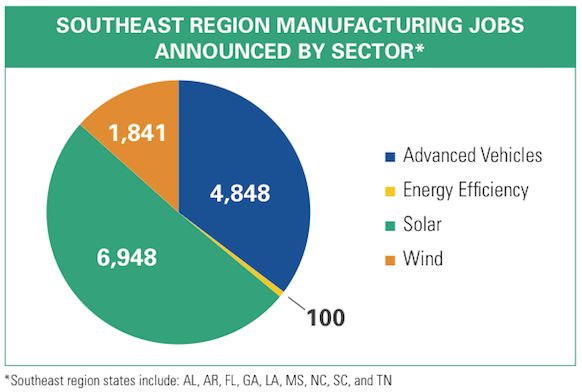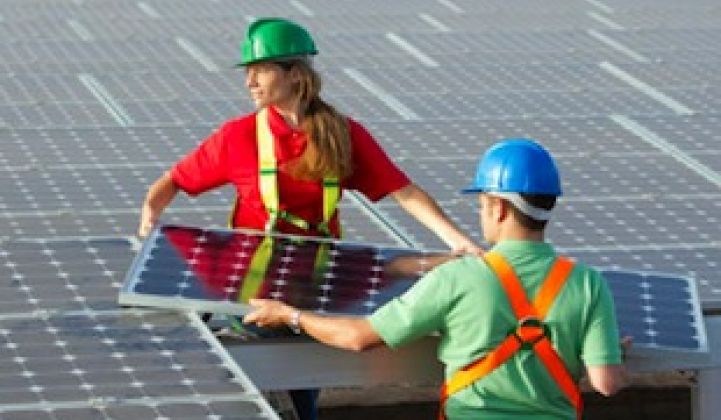The emerging greentech sector may be starting to deliver the economic benefits its advocates have long said it would.
But it may be easier to count new green jobs than to deliver them.
More than 300 new renewable energy or clean transportation projects, facilities projects and facilities were announced in 2012, promising an estimated 110,000 new jobs, according to the year-end report from Environmental Entrepreneurs (E2).
But those 300-plus announced projects and facilities, on the other hand, may never get built or provide the projected number of jobs.
The report highlighted three trends in its green jobs count: North Carolina’s step up to leadership, the solar industry’s continued prominence, and the wind industry’s federal-policy-induced stumble.
Public transportation, which qualifies as part of the green economy because it displaces fossil fuel-intensive transportation, led with 43,000 announced jobs to build or expand municipal light rail, inter-city passenger rail, and bus infrastructure. Power generation was second with 30,000 announced jobs. Manufacturing, energy efficiency, and smart grid were numbers three, four, and five on the list, respectively.
Solar, one of the fastest-growing sectors in the U.S. economy with a 40 percent increase in installed capacity, led the renewables with 19,100 generation and manufacturing jobs. Wind was stymied by the failure of Congress to extend its vital Production Tax Credit until the last day of the year and lost 3,000 jobs in 2H 2012, according to E2.

Energy efficiency saw 9,000 jobs announced in twenty states.
Electric vehicle manufacturing and light rail were the drivers of North Carolina’s emergence as a leader in the sector. A 9.2-mile light rail project linking uptown Charlotte with the University of North Carolina campus will start construction this year, be completed in 2017, and provide more than 7,000 new jobs. Asheville’s Biowheels RTS expects 1.500 jobs to come from the building of 900 solar-powered EV charging stations across the state over the next three years.
Three 2012 stories highlighted by E2 were the expansion of HVDC manufacturer ABB (NYSE:ABB) in North Carolina, the Oregon Cool Schools statewide energy-efficiency initiative, and the manufacture and installation of of radio-controlled light-emitting diode (LED) lighting systems in Chattanooga, Tennessee’s parks and neighborhoods by Global Green Lighting.
The E2 report noted early indications of several greentech regional hubs. On the West Coast, Los Angeles and the San Francisco Bay Area are taking the lead in public transportation projects, and California is building twenty utility-scale solar power projects. The Southwest, especially Arizona, is building energy-efficiency manufacturing. Led by Illinois, the Midwest is doing smart transmission upgrades widely.
With more than 13,700 jobs announced in greentech manufacturing, some 80 percent of the U.S. total, the Southeast led all U.S. regions.

Source: E2 Q4 2012 and Year-In-Review Clean Energy Jobs Report



